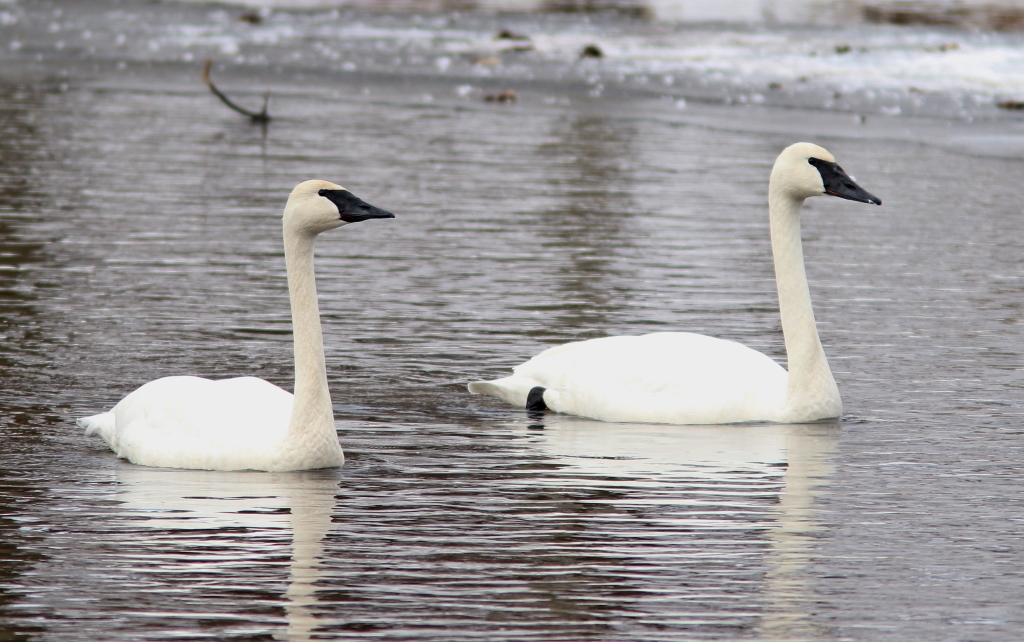Redpolls Flock To Feeders, Swans Aim For Open Water
Wisconsin is home to over 300 species of birds and thousands of birding enthusiasts. Explore the links below for information on birds, bird identification, birding locations and how to get involved in conservation efforts.
Sign up to receive the latest birding reports and other bird news here.
STATEWIDE BIRDING REPORT AS OF FEB. 16, 2022
Trumpeter swans overwinter in Wisconsin but some have already begun to wander northward into small patches of open water across the north woods, a sign that spring is not far away. / Photo Credit: Tom Prestby
The season’s big story has quickly become the common redpoll, a small finch of the arctic that has inundated feeders statewide over the past month. Redpolls visit the state most years but vary in numbers annually and often prevail in the north woods where preferred foods like birch, alder and tamarack dominate. This year, they have found fewer natural foods and moved farther south in large numbers, bringing hundreds to some feeders, including first-time sightings for many backyard birders. If they haven’t visited your feeders yet, they probably will over the next 1-2 months, especially if you offer black oil sunflower or nyjer (thistle) seeds.
There are plenty of American goldfinches joining the feeding frenzy, as well as scattered flocks of pine siskins and a few purple and house finches. Less frequent feeder visitors include hoary redpoll, northern flicker, red-headed woodpecker, white-throated and fox sparrows, pine grosbeaks in the north and tufted titmice in the south. All the action is attracting the attention of bird-eating raptors too, primarily sharp-shinned and Cooper’s hawks. Keep an eye out for white-winged crossbills as well, which continue to show up at spruce trees with cones but could stop by feeding stations as well.
Do you enjoy watching birds at your feeders? Contribute your sightings to science by participating in the 25th annual Great Backyard Bird Count taking place Feb. 18-21, 2022. Spend at least 15 minutes watching birds anywhere and report species and their numbers via the internet. It’s easy, it’s fun and it helps birds!
Despite all the feeder activity, increasing daylight has us optimistic about spring migration. Alas, it’s not here quite yet. But a few trumpeter swans are pushing the boundaries of open water in the far north, and watch for horned larks showing up in new locations in the south. Depending on the weather, migration often gets underway in earnest across the southeast by early March as the first geese, cranes and blackbirds begin to return, proceeding north and west in the weeks after.
Longer daylight also means the breeding season is slowly kicking into gear. Some great horned owls are on eggs now, while bald eagles are tidying up nests or even beginning to lay eggs. Red-tailed hawks and American kestrels are more commonly seen in pairs now across the south, and ditto for ravens up north. Observers have also reported nests of pigeons and doves with eggs. Cardinals, chickadees and house finches will begin to sing more frequently as February ends.
Birders have a lot to be excited about in the month ahead. Share your excitement, track your life list and help us monitor the migration by reporting your sightings to eBird!
– Ryan Brady, DNR Natural Heritage Conservation Program Biologist












